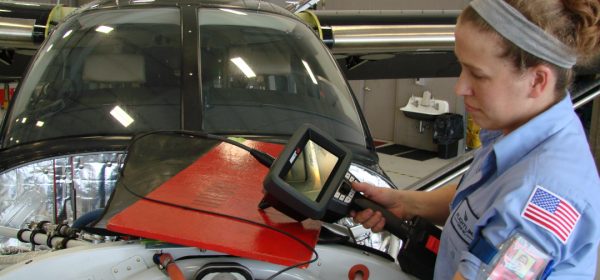Causes of Carbon Deposits in Aircraft Piston Engines

March 18, 2021
Combustion engines are powerful pieces of technology that have served humankind well. However, they are not perfect by any stretch of the imagination. Older machines especially run the risk of burning fuel less efficiently and more messily. Even newer engines are not free from the same issues as less advanced engines. All combustion engines gather residue that accumulates after fuel is consumed. Primarily, the causes of carbon deposits in aircraft piston engines are low-grade fuel and time itself.
What Are Carbon Deposits?
Combustion engines consume fuel as part of normal function. The fuel-air mixture is ignited by the spark plug, which produces energy as heat changes the gases. The by-product of this process is carbon, which begins to build up over time. New engines will experience a negligible amount of build-up, which is normal and not at all unusual.
Ultimately, the problem occurs as engines age. Older components that have run for years or even decades must be carefully tended. The more years’ worth of unchecked build-up an engine suffers, the more likely it is that problems will occur. When it comes to the delicate inner workings of an aircraft, this is especially true.
How Carbon Deposits Impact an Engine
As mentioned, carbon deposits are a normal part of the combustion process. In other words, the most common causes of carbon deposits in aircraft piston engines are simply running the engine and burning fuel. However, adding time to the formula changes the gravity of the situation. Too much carbon build-up will begin to gum up the works of your machine. The least concerning issue is fuel economy. The worst-case outcome is permanent failure and destruction of essential components. Hence, awareness of an aircraft’s age and health is key to creating an effective maintenance plan.
Build-up starts by choking the efficiency of a craft. The early sign of this is that an aircraft will require more fuel than usual for otherwise routine runs. As the condition persists unresolved, the engine will experience increasingly worse symptoms. Next, the craft is likely to stall out entirely as the combustion mechanism becomes enveloped in a suffocating layer of grime. The situation becomes very serious when the engine emits a knocking sound and begins to frequently overheat. After this stage, it’s very likely that the engine will soon cease working entirely and will no longer be operational.
How To Address Carbon Deposits
It should be no surprise to anyone that the only recourse is to clean the internal components most affected by this condition. Especially in older engines, inspect the interior condition with a video borescope system. This will allow you to undergo an up-close investigation without any time-consuming disassembly. If you notice excessive build-up, take the time to clean each part.
While this can seem tedious, there isn’t a way around it. It’s simply a part of this type of engine and the fuels used. Wipe away build-up and flush the components to help clear build-up that’s rooted deeper in the engine. While it’s possible to strip and soak ceased components, it’s generally healthier for the engine and less time-consuming to perform routine cleaning instead.